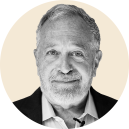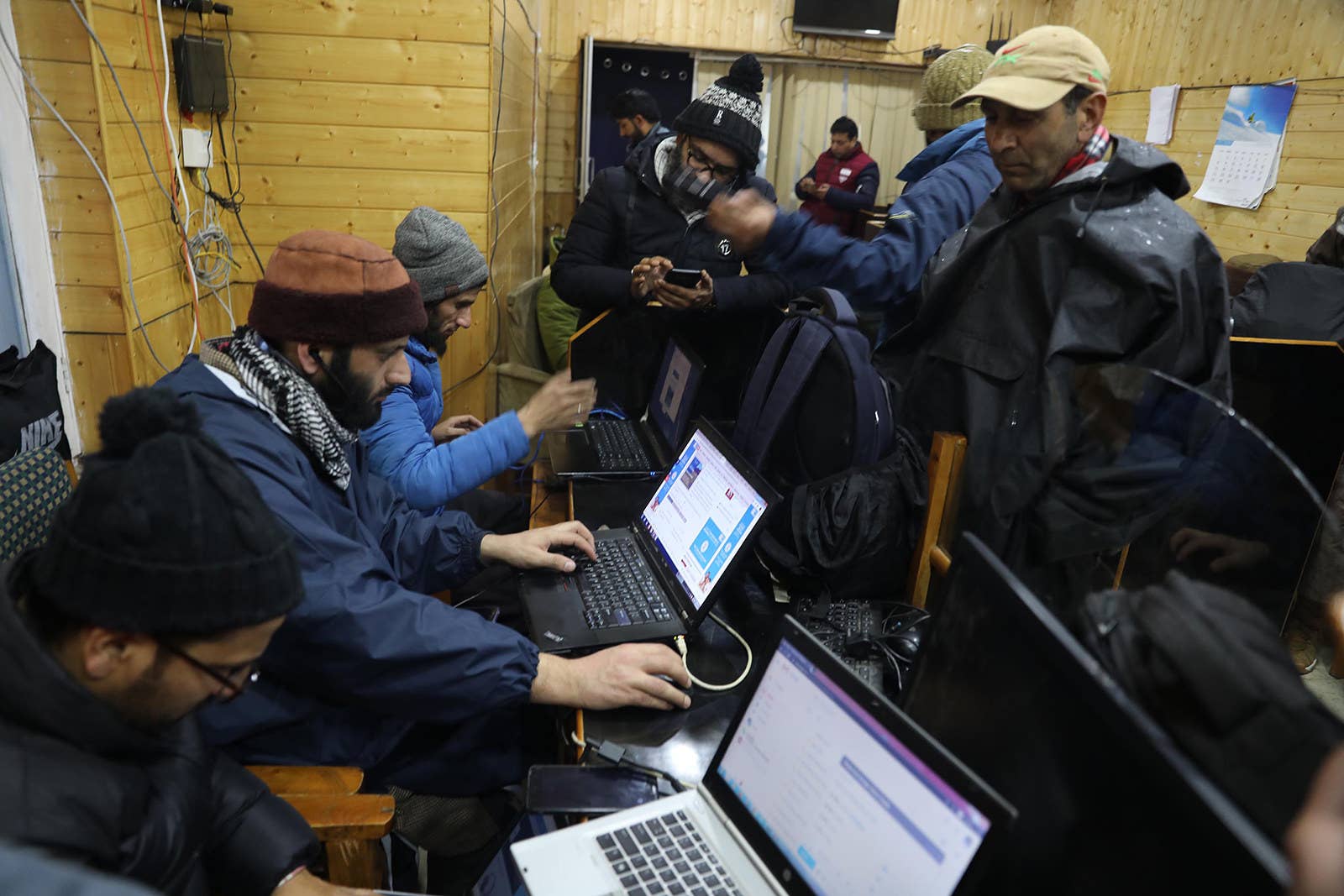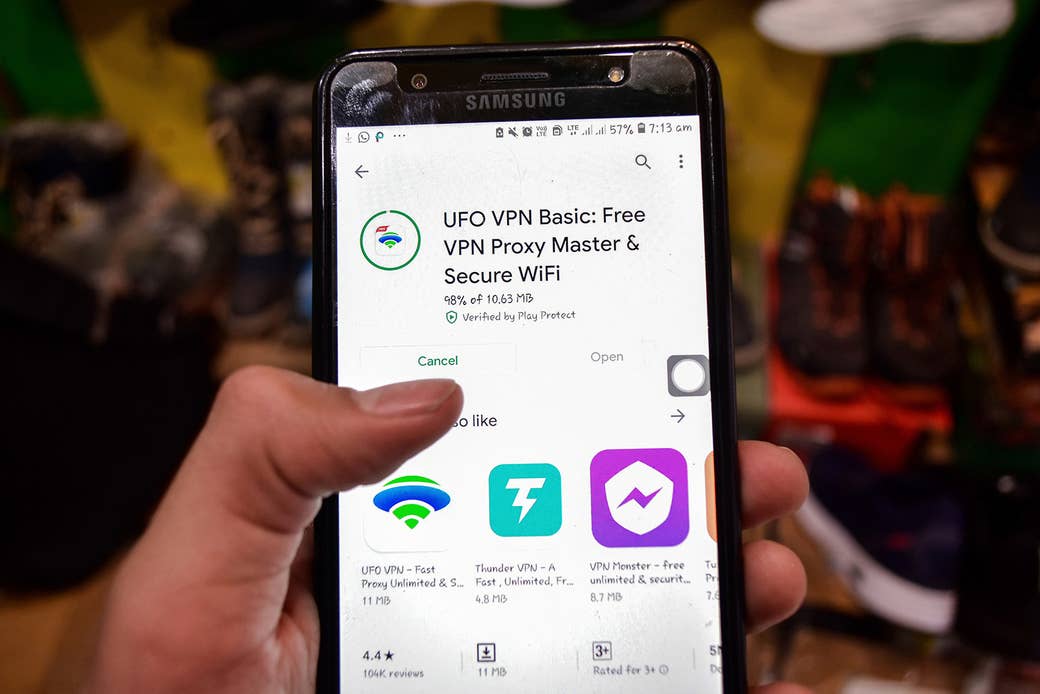It's the last gasp of a political elite that’s been radically out of touch with the lives of normal people for most of the 21st century.
Waleed Shahid BuzzFeed Contributor Posted on February 27, 2020
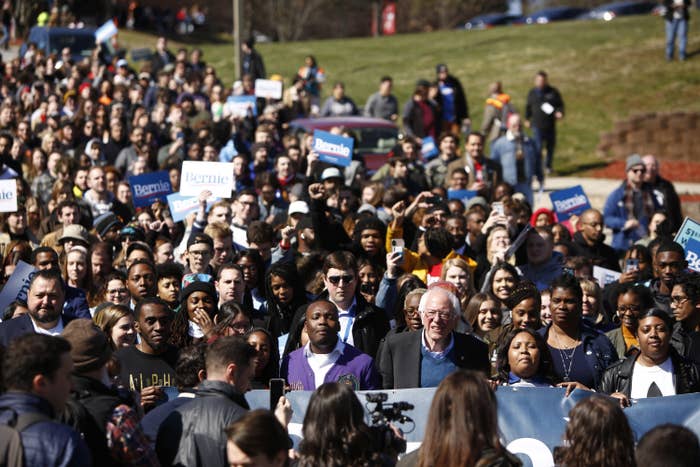
Brian Blanco / Getty Images
Bernie Sanders marching with supporters to early voting at
Winston-Salem State University in North Carolina.
If you were watching cable TV on the night of the Nevada caucuses, you might have heard Chris Matthews compare Bernie Sanders’ electoral victory there to the rise of the Third Reich. While Matthews has since apologized, it was an astounding and unconscionable moment: one of the country’s most prominent political commentators disparaging the campaign of a man who could very well be America’s first Jewish president. And it revealed something powerful.
A few hours earlier, one of America’s most celebrated Democratic strategists, James Carville, went on air to say the winners in Nevada were Sanders and Vladimir Putin. As I watched, I realized these weren’t just random or offhand comments; they’re the last gasp of a political elite that’s been radically out of touch with the lives of normal people for most of the 21st century, increasingly inept at explaining the enormous pain and discontent felt by the working- and middle-class voters who make up the base of the Democratic Party.
To put it another way, a generational transition is happening in the Democratic Party — and it’s clear that many of its current leaders and talking heads don’t understand why.
From my perspective, the reason a party stalwart representing the last half-century of Democratic politics is losing to an independent, anti-establishment outsider is pretty straightforward. After all, millions of Americans are suffering from the consequences of a generation’s worth of bad decisions made by the political establishment, both Democratic and Republican. The communities torn apart by deportations, those jailed by the rise of mass incarceration, the families reeling from the toll of the war in Iraq, young people trying to live their lives under the yoke of crushing student debt, and everyone suffering from skyrocketing inequality after the financial crisis now simply understand that these crises required the willing complicity of leaders in both parties, including even prominent Democrats like Joe Biden.
The actual problems facing Americans have gotten really bad, and people rightly blame consultants and elected officials, both Democrats and Republicans, for bringing our society to the brink.
Simply put, this is why people are drawn to Bernie. They’re looking for new leaders who either didn’t contribute to those crises or — even better — have spent their entire careers opposing the policies that led to them. They are looking for leaders whose solutions actually scale up to the problems facing our society, because they understand there’s an entire generation of politicians who were on the wrong side of some of the defining fights of our lives, and Joe Biden embodies them.
If you were watching cable TV on the night of the Nevada caucuses, you might have heard Chris Matthews compare Bernie Sanders’ electoral victory there to the rise of the Third Reich. While Matthews has since apologized, it was an astounding and unconscionable moment: one of the country’s most prominent political commentators disparaging the campaign of a man who could very well be America’s first Jewish president. And it revealed something powerful.
A few hours earlier, one of America’s most celebrated Democratic strategists, James Carville, went on air to say the winners in Nevada were Sanders and Vladimir Putin. As I watched, I realized these weren’t just random or offhand comments; they’re the last gasp of a political elite that’s been radically out of touch with the lives of normal people for most of the 21st century, increasingly inept at explaining the enormous pain and discontent felt by the working- and middle-class voters who make up the base of the Democratic Party.
To put it another way, a generational transition is happening in the Democratic Party — and it’s clear that many of its current leaders and talking heads don’t understand why.
From my perspective, the reason a party stalwart representing the last half-century of Democratic politics is losing to an independent, anti-establishment outsider is pretty straightforward. After all, millions of Americans are suffering from the consequences of a generation’s worth of bad decisions made by the political establishment, both Democratic and Republican. The communities torn apart by deportations, those jailed by the rise of mass incarceration, the families reeling from the toll of the war in Iraq, young people trying to live their lives under the yoke of crushing student debt, and everyone suffering from skyrocketing inequality after the financial crisis now simply understand that these crises required the willing complicity of leaders in both parties, including even prominent Democrats like Joe Biden.
The actual problems facing Americans have gotten really bad, and people rightly blame consultants and elected officials, both Democrats and Republicans, for bringing our society to the brink.
Simply put, this is why people are drawn to Bernie. They’re looking for new leaders who either didn’t contribute to those crises or — even better — have spent their entire careers opposing the policies that led to them. They are looking for leaders whose solutions actually scale up to the problems facing our society, because they understand there’s an entire generation of politicians who were on the wrong side of some of the defining fights of our lives, and Joe Biden embodies them.
And yet, it’s clear that few of the people you see discussing politics on cable TV understand that. They insist Biden’s poor showing has been the fault of lackluster debate performances. Just as they failed to understand Trump’s rise, they fail to see that their theories have been discredited. And they’ve all but called Democratic voters stupid, because these talking heads are unable to grapple with the obvious: Sanders is winning by speaking to the hopes and fears of a rising generation of Democrats who look and think a lot more like Alexandria Ocasio-Cortez than Joe Biden.
There are signs of hope, however. Progressives like Alexandra Rojas and Abdul El-Sayed are now providing commentary at CNN that raises the level of discussion to a much higher level. Yvette Simpson is often sparring with Rahm Emanuel and Chris Christie at ABC News. And Anand Giridharadas has been holding his own network accountable and it sounds like the message is being heard. But the shift is happening at a glacial pace, and in the meantime, cable TV keeps on embarrassing itself on a daily basis. The reason is simple: the lives of many of its talking heads are totally divorced from the enormous pain of having an unaffordable medical bill, or $200,000 in student loan debt, or not having even $500 in the bank.
Many in my generation see this clearly. We are diverse, worse off than our parents, and came of age during the Iraq War and the financial crisis. We understand the existential threat of the climate crisis, and see an authoritarian right-wing government that wants to suppress multiracial democracy at every turn. The Republican Party, despite having won the popular vote only once in my lifetime, nevertheless controls the Presidency, the Senate and the Supreme Court. And top scientists at the UN tell us we have about 10 years to act in order to stave off ecological collapse.
To us, things look and feel deeply, deeply broken, which is why a political revolution seems a more pragmatic and necessary vehicle for hope than Biden’s prediction of a post-Trump epiphany among Republicans.
On an even deeper level, my generation, despite being plugged in and connected, feels deeply alone. The movements we built under Obama — Occupy Wall Street, a network of immigrant DREAMers, the climate movement, Black Lives Matter — have been fueled in part by a deep desire to find community and identity in a country that is increasingly unable to respond to our aspirations and tells us that we must fend for ourselves. Sanders, on some deep level, has given voice to these individual movements by linking them together into a song of solidarity: “Are you willing to fight for someone you don't know?”
Amid such a compelling offer, the smug and empty “liberalism” of the supposedly serious people in charge finds itself unmoored, bereft of ideas to solve our many crises. Sanders’ big idea is to return the Democratic Party to its roots in the powerful labor and civil rights movements of the mid-20th century. The universal social programs Bernie Sanders is fighting for are not radical — they’re commonsense and cost-effective ways to provide the basic things we all need to thrive. In most European countries, his agenda would belong in a center-right party. It’s why Democrats haven’t been convinced by the yearslong fear-mongering about his candidacy.
As Alexandria Ocasio-Cortez says: “We aren’t pushing the party left, we are bringing the party home.”
My mother is a union member who experienced the cruelty of navigating our byzantine health care system after suffering a stroke three years ago. My dad is angry watching my two younger siblings suffer from a mountain of student debt while they try to catch up with soaring rents. They’ve lived in this country for decades and feel under attack by this president and the racism he’s encouraged among our citizens.
The first time they ever voted was for Barack Obama, because he gave them hope.
This time, like many of the immigrant and working-class voters of Iowa, New Hampshire, and Nevada, both of my parents are supporting Bernie Sanders. The TV pundits and wealthy consultants can’t explain it. But it’s because they feel someone finally understands their struggles and is willing to fight those who created those problems in the first place.
It’s hope and change they can believe in.
Waleed Shahid is the spokesperson of Justice Democrats, the organization known for recruiting Alexandria Ocasio-Cortez to run for Congress and helping launch the Green New Deal.
There are signs of hope, however. Progressives like Alexandra Rojas and Abdul El-Sayed are now providing commentary at CNN that raises the level of discussion to a much higher level. Yvette Simpson is often sparring with Rahm Emanuel and Chris Christie at ABC News. And Anand Giridharadas has been holding his own network accountable and it sounds like the message is being heard. But the shift is happening at a glacial pace, and in the meantime, cable TV keeps on embarrassing itself on a daily basis. The reason is simple: the lives of many of its talking heads are totally divorced from the enormous pain of having an unaffordable medical bill, or $200,000 in student loan debt, or not having even $500 in the bank.
Many in my generation see this clearly. We are diverse, worse off than our parents, and came of age during the Iraq War and the financial crisis. We understand the existential threat of the climate crisis, and see an authoritarian right-wing government that wants to suppress multiracial democracy at every turn. The Republican Party, despite having won the popular vote only once in my lifetime, nevertheless controls the Presidency, the Senate and the Supreme Court. And top scientists at the UN tell us we have about 10 years to act in order to stave off ecological collapse.
To us, things look and feel deeply, deeply broken, which is why a political revolution seems a more pragmatic and necessary vehicle for hope than Biden’s prediction of a post-Trump epiphany among Republicans.
On an even deeper level, my generation, despite being plugged in and connected, feels deeply alone. The movements we built under Obama — Occupy Wall Street, a network of immigrant DREAMers, the climate movement, Black Lives Matter — have been fueled in part by a deep desire to find community and identity in a country that is increasingly unable to respond to our aspirations and tells us that we must fend for ourselves. Sanders, on some deep level, has given voice to these individual movements by linking them together into a song of solidarity: “Are you willing to fight for someone you don't know?”
Amid such a compelling offer, the smug and empty “liberalism” of the supposedly serious people in charge finds itself unmoored, bereft of ideas to solve our many crises. Sanders’ big idea is to return the Democratic Party to its roots in the powerful labor and civil rights movements of the mid-20th century. The universal social programs Bernie Sanders is fighting for are not radical — they’re commonsense and cost-effective ways to provide the basic things we all need to thrive. In most European countries, his agenda would belong in a center-right party. It’s why Democrats haven’t been convinced by the yearslong fear-mongering about his candidacy.
As Alexandria Ocasio-Cortez says: “We aren’t pushing the party left, we are bringing the party home.”
My mother is a union member who experienced the cruelty of navigating our byzantine health care system after suffering a stroke three years ago. My dad is angry watching my two younger siblings suffer from a mountain of student debt while they try to catch up with soaring rents. They’ve lived in this country for decades and feel under attack by this president and the racism he’s encouraged among our citizens.
The first time they ever voted was for Barack Obama, because he gave them hope.
This time, like many of the immigrant and working-class voters of Iowa, New Hampshire, and Nevada, both of my parents are supporting Bernie Sanders. The TV pundits and wealthy consultants can’t explain it. But it’s because they feel someone finally understands their struggles and is willing to fight those who created those problems in the first place.
It’s hope and change they can believe in.
Waleed Shahid is the spokesperson of Justice Democrats, the organization known for recruiting Alexandria Ocasio-Cortez to run for Congress and helping launch the Green New Deal.



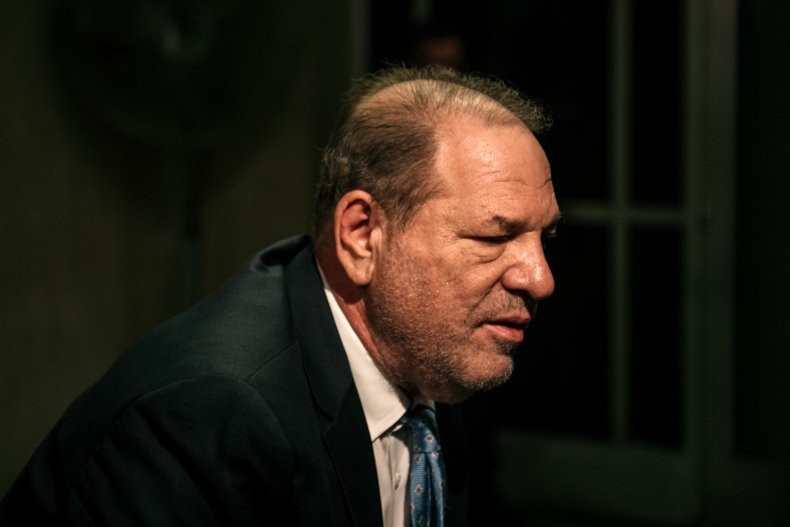 Disgraced movie producer Harvey Weinstein enters New York City Criminal Court on February 24, 2020 in New York City. Weinstein was convicted of sexual assault charges.SCOTT HEINS/GETTY
Disgraced movie producer Harvey Weinstein enters New York City Criminal Court on February 24, 2020 in New York City. Weinstein was convicted of sexual assault charges.SCOTT HEINS/GETTY